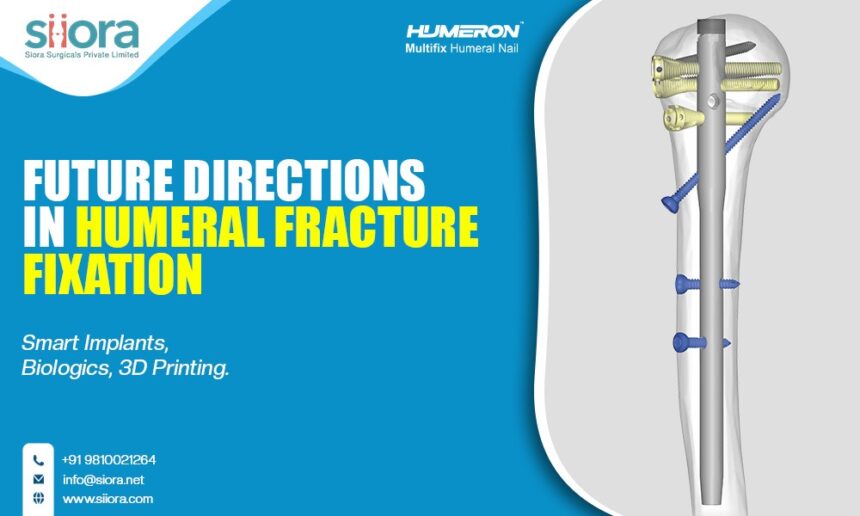Broken bones have always pushed surgery to evolve, and the humerus is no exception. Fixing a humeral fracture isn’t just about putting metal inside the bone anymore; it’s about how we can make healing smarter, faster, and more personal to each patient. Standard tools like humerus interlocking nail work well, but the way things are heading tells us that orthopedics will soon look very different. Three areas—smart implants, biologic therapies, and custom-made 3D-printed solutions—are standing out as real game changers.
Smart Implants: Beyond Stability
When surgeons put an implant inside the body today, it does its job quietly, without feedback. Imagine instead if that implant could report back—sharing small details about how the bone is healing. That’s the idea behind “smart” implants. They use tiny sensors to measure stress, motion, and stability, and that information can be sent directly to a surgeon’s screen.
Why does this matter? Healing isn’t always straightforward. Some fractures take longer, and sometimes implants loosen without warning. A device that sends early signals gives doctors the chance to act before complications develop. Think of it as a safety net for both patients and surgeons.
For patients too, having that data could be empowering. Instead of waiting months to get X-rays and progress reports, they might track healing day by day through an app. Real-time rehabilitation adjustments could be made. It’s evident that connected implants have the potential to revolutionize recovery, even though issues like cost and data privacy still need to be resolved.
Biologics: Assisting Nature
It takes biology, not just metalwork, to heal a fracture. Biologics come into play when the bone requires the proper conditions to regain its strength. Growth factors, stem cells, and platelet-rich plasma are already being tested by surgeons to enhance the body’s inherent healing mechanism. Biologics may greatly accelerate bone healing in difficult situations, such as humeral fractures in elderly osteoporosis patients. For instance, stem cells can be harvested from a patient’s own marrow, concentrated, and reintroduced at the fracture site to encourage faster bone growth. Some researchers are even exploring ways to load implants with slow-release biologic agents so the support is delivered directly where it’s needed most.
The science is advancing quickly, though it comes with real-world hurdles. Biologics are costly and not yet widely available. But for patients dealing with non-healing fractures, these treatments could make the difference between months of immobility and an earlier return to daily life.
One size does not fit all when it comes to 3D printing
Although traditional implants are designed to fit the majority of people, surgeons are aware that no two bones are alike. For this reason, 3D printing has gained a lot of interest. A precise model of a patient’s bone can be created from a CT scan using this technology, and a custom implant that precisely fits the anatomy can then be made.
This isn’t just a matter of comfort—it changes the surgical experience. With the right fit, surgery can be shorter and complications fewer. Surgeons can even practice on printed bone models before entering the operating room. For complex or irregular fractures of the humerus, that preparation can save precious time during surgery.
Materials have also improved. Titanium remains popular, but researchers are now printing implants from polymers and other biocompatible materials that mimic bone more closely. It’s not yet mainstream, but as costs drop, patient-specific implants may become a standard option in complex cases.
A Preview of What’s Up Next
These developments—biologicals, 3D printing, and smart orthopaedic implants—all focus on distinct facets of the healing process. When taken as a whole, they suggest a move away from universal fracture care. Rather, it appears that personalized care that takes into account the patient’s biology and lifestyle is the way of the future.
There are, of course, hurdles: not every hospital can afford cutting-edge devices, and regulatory frameworks move slowly. But the progress is undeniable. The vision is clear—a time when fixing a humeral fracture won’t just be about putting bone ends together but about using every tool, digital and biological, to give the patient the best possible road to recovery.


